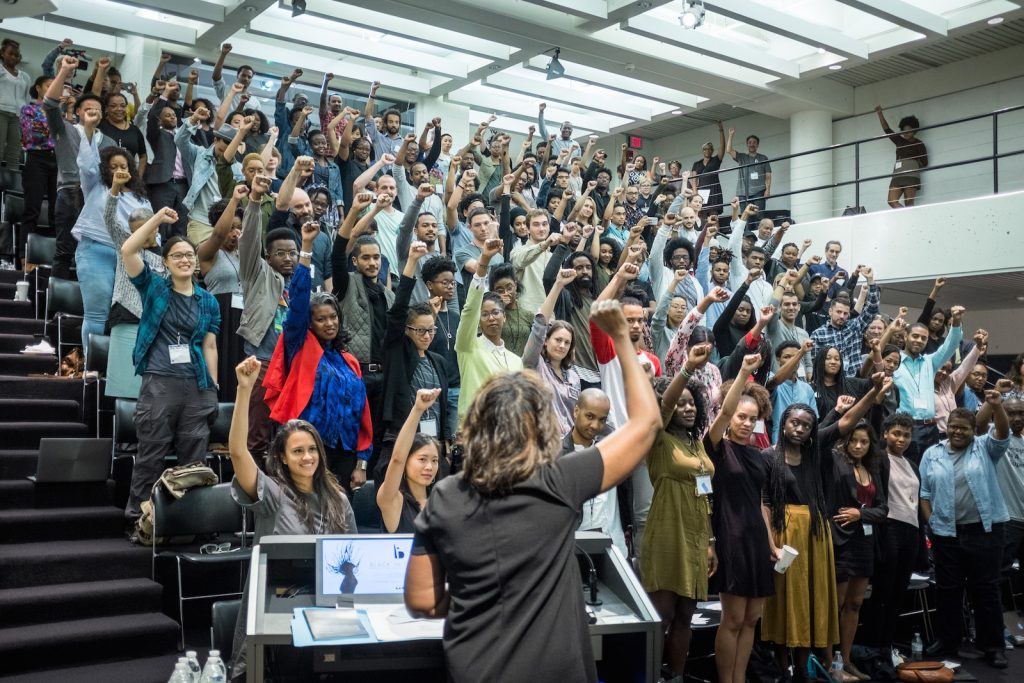Commencement season has been especially energetic for the Harvard Graduate School of Design’s Toni L. Griffin.
This spring, Griffin curated the GSD’s “Design and the Just City” exhibition and led the option studio “Urban Disobedience: 99 Provocations to Disrupt Injustice in St. Louis.” Both represent expressions of her ongoing work as a visionary urban planner invested in questions of justice and equity. (Griffin joined the GSD in 2016 as Professor in Practice of Urban Planning and director of the GSD’s Just City Lab.)
In the wake of the Spring 2018 term, the Harvard Crimson interviewed Griffin for a “Fifteen Minutes” feature, touching on her thoughts on urban justice and the so-called just city. Griffin noted the need for adaptability in perspective when discussing urban justice, a value illustrated in her “Design and the Just City” exhibition.
“It’s recognizing that every city or neighborhood is really different, so there wasn’t just one catch all ‘just city,'” she says. “A just Houston is gonna look different than a just Albuquerque or a just LA or a just Minneapolis or a just Topeka, Kansas. We wanted a way for communities to be able to define justice for themselves and what elements of a just city meant for them.”
Then, just days before the University’s 2018 Class Day and Commencement exercises, Griffin was selected by this year’s Harvard Black Graduation Committee as the recipient of its Richard Theodore Greener Academia Award. “Named for the first Black Harvard student to graduate (1870),” reads the official prize description, “this award is for a Harvard member of the faculty, administration, or staff who has demonstrated a commitment to discovering, enhancing, and promoting modern areas of study about Black people(s) that directly impact and strengthen the Black communities within the African diaspora.” Griffin was honored during a Radcliffe Yard ceremony on May 22.
Following these spring-semester bookends, Griffin has headed to South Africa for a series of engagements. On May 31, she presents a lecture entitled “My Just City is Black and White: Race, Space and Design” at the Nelson Mandela Foundation. The U.S. Embassy of South Africa is hosting Griffin as part of a series of events to commemorate the Nelson Mandela Centenary. In addition to appearing at the Nelson Mandela Foundation, Griffin will participate in a series of public engagements and meetings in Pretoria, Johannesburg, and Cape Town, alongside two Just City Lab research assistants, GSD students Natasha Hicks and Nerali Patel.
The work and dialogue that Griffin and her Just City Lab colleagues bring back from their South Africa engagements will inform the Lab’s ongoing research.

Griffin first joined the GSD community as a Loeb Fellow in 1997. She assumed the role of Professor in Practice of Urban Planning in 2016. She is the founder of Urban Planning and Design for the American City, based in New York. Through the practice, she served as Project Director of the long-range planning initiative of the Detroit Work Project, and in 2013 completed and released Detroit Future City, a comprehensive citywide framework plan for urban transformation. Most recent clients include working with the cities of Memphis, Milwaukee, and Pittsburgh.
Previously, Griffin was a Professor of Architecture and the founding Director of the J. Max Bond Center on Design for the Just City at the Spitzer School of Architecture at the City College of New York. Founded in 2011, the Bond Center is dedicated to the advancement of design practice, education, research and advocacy in ways that build and sustain resilient and just communities, cities and regions. Prior to returning to private practice, Griffin was the Director of Community Development for the City of Newark, New Jersey, where she was responsible for creating a centralized division of planning and urban design, launching the city’s complete overhaul of its comprehensive master plan and zoning ordinance. Between 2000 and 2006, Griffin served as Vice President and Director of Design for the Anacostia Waterfront Corporation in Washington, DC, leading the planning for the Washington Nationals Ballpark District, and held the position of Deputy Director for Revitalization Planning and Neighborhood Planning in the D.C. Office of Planning, responsible for the Anacostia Waterfront Initiative, the downtown City Center redevelopment, and numbers neighborhood revitalization plans.
Griffin began her career as an architect with Skidmore, Owings & Merrill LLP in Chicago, where she became an Associate Partner involved in architecture and urban design projects in London and Chicago.
